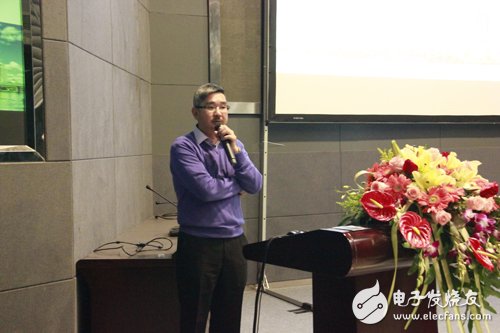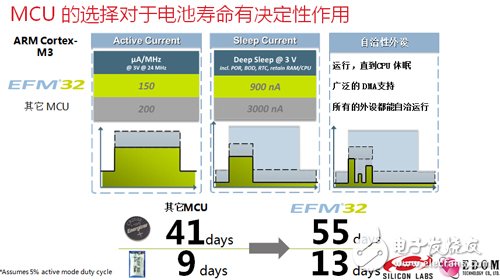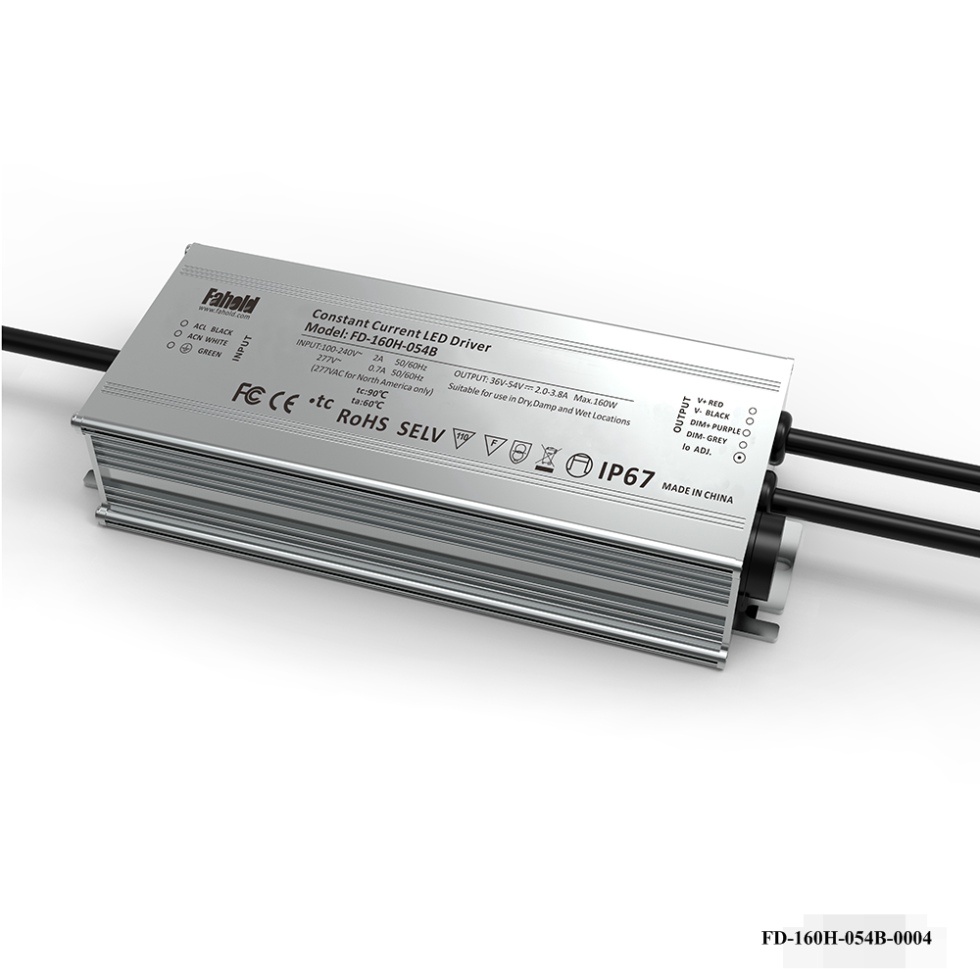The launch of Google Glass in 2013 directly triggered a new wave of wearable smart devices. And domestic related manufacturers have also entered, smart bracelets, intelligent heart rate belts, smart watches, smart rings, smart necklaces, etc. have been introduced to the market. Although wearable smart devices are particularly hot, there is still no so-called "explosion". In the case that there is no pain point or not, the hot-wearing inside the smart wearable product circle is cold, and the wearable device is in an awkward situation. In view of this, on the afternoon of January 16, 2015, at the "2015 IoT Technology and Innovation Application Conference" held by e-sports enthusiasts, Peng Zhichang, senior marketing manager of Silicon Micro Devices Microcontroller from Silicon Labs, "to understand the design requirements of wearable products" Give a speech on the topic, explore the wearable design trade-offs, and open the icebreaker for wearable devices. Peng Zhichang, senior marketing manager of Silicon Labs Asia Pacific microcontrollers, pointed out that the key design trade-offs of wearable products and market demand are the key to successful product success. Wearable products continue to heat up, and wearable products in health and medical fields are flooding into the market, while the consumer market is flat. How to break the pattern is extremely urgent. In this regard, Peng Zhichang, senior marketing manager of Silicon Labs Asia Pacific microcontrollers, pointed out that the wearable products should be correctly defined in the following three aspects. 1. Size factor: The volume and weight must support "wearable", the battery must be small and lasting. 2. Functional characteristics: The corresponding sensor should be selected according to different aspects of sensing information including action, environment, biometrics and so on. Learn about time processing and storage information and different communication methods to select chips. 3. Transmission: Select wired and wireless connection methods according to product performance requirements, such as smart Bluetooth, Wi-Fi in some cases. Creating a user experience that inspires interest is critical to properly defining wearable products. In response to the phenomenon that many companies compete in the same sector, Peng Zhichang pointed out that "wearable product solutions must be distinctive to stand out from the crowd, and to seek product differentiation from industrial design and human-machine interface, sensor innovation, battery life, value-added services and other factors. "" Take into account and weigh the factors that drive product differentiation. We can analyze the design trade-offs of wearable products from simple pedometers, fitness trackers, and smart watch designs. From the term "wearable", lower device power consumption and longer battery life are the core user experience of many wearable products, which directly increases product availability. In view of this, Peng Zhichang, senior marketing manager of Silicon Labs Asia Pacific microcontrollers, emphasized that the choice of MCU is decisive for battery life. The EFM32 is the world's lowest power 32-bit Cortex-M family of microcontrollers from Silicon Labs, an industry leader in high-performance, analog-intensive, mixed-signal IC innovation. The EFM32TM Gecko microcontroller family includes energy-efficient devices based on the ARM® Cortex®-M4 (Floating Point Unit (FPU)), Cortex-M3 and Cortex-M0+ processors. Wearable products can evolve over the development phase to find MCU combinations that provide pin and software compatibility. Peng Zhichang said that for the application of smart watches, EFM32 has its unique advantages and is the best choice for ultra-power extreme design. Peng Zhichang pointed out that a good energy-saving architecture allows wearable products to be designed to keep battery life unchanged while reducing battery size, enabling smaller form factors for wearable products and bringing more functional features to wearable devices. Of course, in addition to the battery life and size design considerations, wireless transmission methods and sensor selection are also necessary factors for wearable product design considerations. Peng Zhichang said that Silicon Labs has sensors for a variety of wearable products, he stressed the future Sensors will continue to innovate to meet more wearable product design needs. Peng Zhichang concluded at the end of the speech. In the final analysis, the design of wearable products should focus on the following six points. 1. Design considerations: product features, battery life, price and size. 2. The battery is extremely small and must be focused on minimizing energy consumption. 3. The choice of energy efficient MCUs is important for battery life. 4. Requirements can (and will) change to find a pin-compatible MCU family. 5. Sensors are the soul of wearable products and offer differentiation, but must be low power. 6. Minimize RF communication to save energy and make good use of duty cycle characteristics. Despite the fact that wearables have not yet appeared, it is believed that as long as the above points are weighed in the design of wearable products, making wearable products more usable, the emergence of explosives is just around the corner.
IP67 Aluminum Case Led Driver
A comprehensive range of IP Rated/Waterproof AC/DC Long Life Span Led Driver suitable for use in a range of Lighting applications, including Street lighting, Architectural Lighting, Task Lighting, Medical Lighting, Transportation Lighting, Entertainment Lighting, Moving Signs, Safety & Security Lighting and Outdoor Area Lighting Applications. LED Lighting power supplies & LED Drivers in constant voltage or Constant Current models IP67 rated. Waterproof LED Driver, 48V Led Driver .
Advantage: High Power Led Driver, safety and stability, high pressure test protection, short circuit protection, anti-lightning strong, safe level Certification, UL TUV FCC, etc. certification.
Parameter:
Input ovltage:100-277V
Output voltage(different range):24-38V/30-42V/36-54V/45-76V/72-143V
Current:100-5000mA
Power factor:>0.95
THD:<15%
Dimming: 0-10V/PWM/RX
Housing: Aluminum
What's the benefits of Fahold Linear Lights driver?
IP67 Aluminium Case Led Driver Waterproof Led Driver,Long Life Span Led Driver,48V Led Driver,led constant current driver,driver for led light ShenZhen Fahold Electronic Limited , https://www.fahold.com



FAQ:
Question 1:Are you a factory or a trading company?
Answer: We are a factory.
Question 2: Payment term?
Answer: 30% TT deposit + 70% TT before shipment,50% TT deposit + 50% LC balance, Flexible payment
can be negotiated.
Question 3: What's the main business of Fahold?
Answer: Fahold focused on LED controllers and dimmers from 2010. We have 28 engineers who dedicated themselves to researching and developing LED controlling and dimming system.
Question 4: What Fahold will do if we have problems after receiving your products?
Answer: Our products have been strictly inspected before shipping. Once you receive the products you are not satisfied, please feel free to contact us in time, we will do our best to solve any of your problems with our good after-sale service.